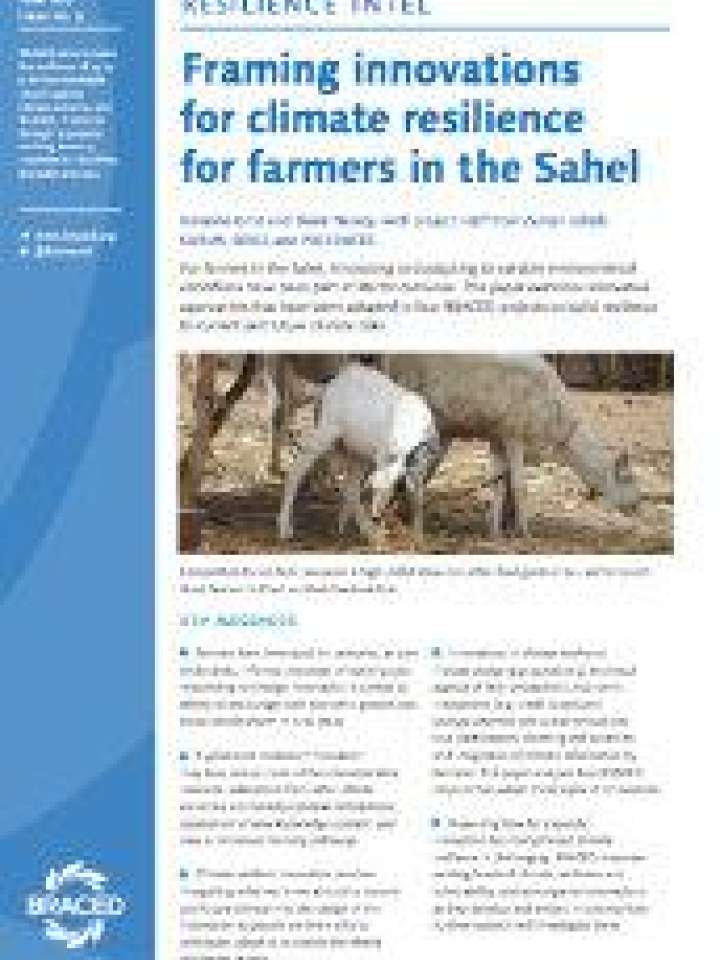Framing innovations for climate resilience for farmers in the Sahel
For farmers in the Sahel, innovating and adapting to variable environmental conditions have been part of life for centuries. This paper examines innovative approaches that have been adopted in four BRACED projects to build resilience to current and future climate risks.
Key messages:
- Farmers have innovated for centuries, as part of dynamic, informal processes of learning, changing and responding to change. Innovation is central to efforts to encourage both economic growth and social development in rural areas.
- A grassroots, inclusive ‘innovation’ may have one or more of five characteristics: newness; adaptation from other efforts; collective and socially cohesive interactions; application of new knowledge content; and new or improved learning pathways.
- Climate-resilient innovation involves integrating what we know about the current and future climate into the design of the innovation so people are more able to anticipate, adapt to or absorb the effects of climate change.
- Innovations in climate resilience include changing practices (e.g. technical aspects of farm production), economic innovations (e.g. credit access and savings schemes) and social innovations (e.g. participatory planning and access to and integration of climate information by farmers). This paper analyses four BRACED projects that adopt these kind of innovations.
- Measuring how far a specific innovation has strengthened climate resilience is challenging. BRACED measures existing levels of climate resilience and vulnerability, and accompanies innovations as they develop and embed in communities. Further research will investigate these.
Explore further
